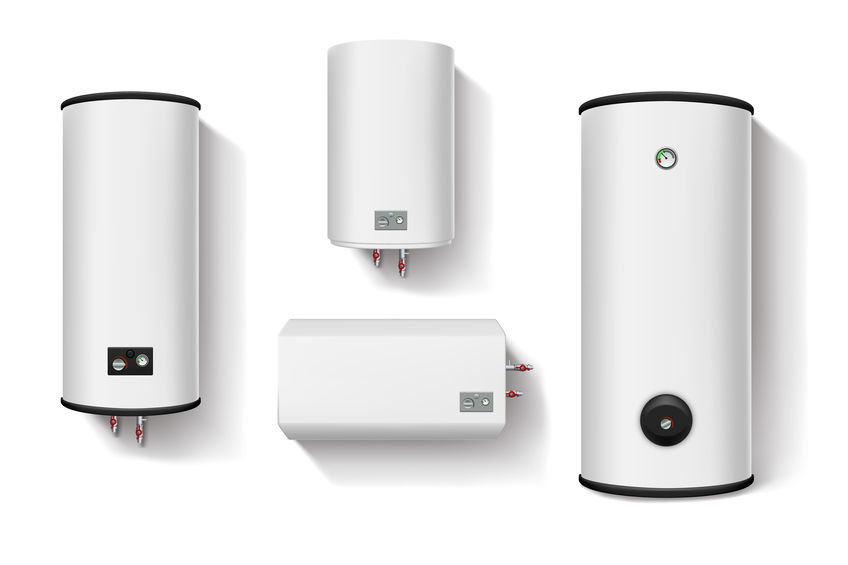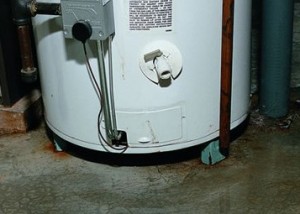Do’s and Don’ts for Placing Items Near a Water Heater
Your water heater is one of the most important pieces of equipment that you have in your home. When it is not working correctly, you cannot enjoy a hot shower or heat your home. By not keeping it well maintained and taking certain precautions, it can pose a safety risk to your home and family
The problem is, many who live in smaller homes, apartments, or condos may find that they lack the extra storage space they so desperately need. Therefore, utility closets that may house your water heater could become a viable solution for storing excess items that simply do not have a home elsewhere. Depending on what you are storing near or around the water heater, this can potentially be a cause for concern as well as a safety risk to you, your home, and others.
Do … Clear the area around your water heater. Since water heaters run on electricity or fuel such as oil, propane, or gas, it is important to ensure that your water heater has adequate space for proper ventilation.
Do … Keep it clean and safe. If the space that holds your water heater doubles as a storage or laundry room, make sure you keep it organized and clean.
Do … Install shelving and hooks to keep things such as laundry detergents and other household items away from the water heater.
Don’t … Store combustible materials within 18 inches of your water heater. Flammable items placed closer than that could potentially catch fire.
Don’t … Store items that are prone to moisture damage such as books, papers, or magazines near the water heater.
Don’t … Place any items that may block or obstruct your view of the water heater. If any view is hidden, you may not notice your water heater is leaking until it’s too late.
As a rule of thumb, always remember to keep space around your water heater and store any items a reasonable distance away from the unit so that you there is no potential for a fire or safety hazard.

CHOOSING THE RIGHT HEATER FOR YOUR NEEDS
it may be time to consider a new heater. If this is what brought you, here are some important things to consider when choosing a new heater for your needs.
SYSTEM TYPE AND FUEL OPTIONS
start by considering your fuel options and the type of system you prefer. Many homeowners prefer natural gas heaters since they are cost-effective and fairly efficient. However, if electricity is cheaper for you, an electric heater can be a bit more efficient and effective. Propane and oil are among the other possibilities with fuel.
CORRECT SIZING FOR YOUR HOME
It’s important to have a heating system in Corona, that’s properly sized for your living spaces. An oversized or undersized heater can be inefficient and increase your risk of needing repairs. One of comfort pros can help you figure out the sizing calculations, measured in BTUs or tons, for your home. Factors such as your home’s square footage and window efficiency are also considered.
NEWER COMFORT FEATURES
The good thing about new heating installation in Corona, today is that there are many comfort features to consider, such as programmable thermostats that allow for precise temperature control. Some homeowners also prefer zoning systems. Heating systems set up this way have separate thermostats for various zones in your living spaces.
COMFORT PROS ARE HERE TO HELP
Conditioning will gladly help you narrow down your selection. Once you’ve made a decision, get your new heater properly set up. also the company you can call on for heating maintenance

Immediate Things to Do When Your Water Heater Breaks!
It’s a worse-case nightmare… You walk into your house after a long work day, and find that your water heater is leaking and you need to get it fixed quickly! If you came here looking for information on what you can do to stop a leaking water heater, you found the right page!
Stop the Water
Locate the cold water supply pipe. This pipe leads from the main water line into the top of the water heater. When working properly, the water stops flowing when the tank is full, but because of the burst, the tank pushes the water out into the room as soon as it comes in from the pipe. Turn off the cold water supply line by twisting the valve clockwise until it cannot turn anymore. This will stop the flow of water that continues to fill the hot water heater and spill out from the burst seams.
Shut Off the Power
The electric or gas heating element can pose a new hazard to your home if it continues to run. It can stay heated long after the water has leaked from the tank. This can waste energy and in the worst-case scenario, start a fire. The heating element normally shuts itself off after the water reaches a certain temperature, but if your tank burst because of a faulty thermostat, it probably will not shut itself off. Locate and flip the breaker for the hot water tank in your electrical breaker box. If the hot water heater is gas-powered, shut off the gas line leading to it, and vacate the home until the natural gas smell is completely gone.
Cleanup
Remove any undamaged furniture, boxes or other salvageable items from the water-damaged area. Take photos of the items that are damaged; as well as the walls, floors and other fixtures that are covered or soaked with water. The photos will help your homeowner’s insurance company determine the cost to repair or replace the items. Use a wet/dry vacuum to remove the standing water from the area around the tank and any carpeted areas where the water has seeped. Run a dehumidifier, if you have one, to inhibit the growth of mold.
Make an Insurance Claim
Contact your insurance agent or company to make a claim. Even if you do not think that you have suffered a loss, the insurance company will likely send out a team of restoration experts to draw the excess moisture from your walls and flooring. Do not throw away your hot water tank. The insurance adjuster will need to see it to determine the cause of the burst and whether the company will pay for damages that the burst caused.The cost of the water heater itself is not likely to be covered, but nearly anything else that was damaged by the water will be covered, less your deductible. An insurance adjuster will visit your home to assess the damage. Show the adjuster the photos you took, and answer any questions she may have.

Replace Hot Water Heater
There are some home improvement projects you should never do yourself, but replacing a hot water heater is not one of them. If you have a working knowledge of basic tools and are comfortable soldering a bit of copper, you can replace a hot water heater yourself in less than a day with these steps.
Select the Right Water Heater for your Space
Nowadays, selecting a new water heater is a process in itself. Things to consider are supply, storage, energy efficiency, size, and fuel type. The different types of water heaters include conventional storage water heaters, tankless, and heat pump water heaters. Newer options include solar water heaters and indirect water heaters.
Make Checks for Safety and Permits
Before digging in, you’ll need to make some phone calls. Check with your local department of inspections and ask if you need a permit. For those of you in County, building permit information can be found here. You’re likely to need a plumbing or electrical inspector to look over your work at the end, too.
Round Up the Tools and Materials
Regardless of the type of water heater system you replace, you’re likely to need and know how to use the following tools.
Tools you need to replace a hot water heater:
4-in-1 screwdriver
Adjustable wrench
Electrical tape
Pipe wrench
Plumbers tape
Safety glasses
Soldering torch
Tape measure
Tube cutter
Voltage tester
Wire stripper/cutter
How A Water Heater Works
when you want hot water for a shower, to run a load of laundry, or to wash your dishes, you usually rely on a water heater. The most popular type of water heaters in the US is the conventional storage water heater, where water is heated to a set temperature and then stored at that temperature in a tank until a homeowner turns on the “hot” water tap. This article teaches you how the two most popular types of water heaters, gas and electric, work and heat the water in your home.
A gas powered water heater has cold water brought into the tank through a dip tube. This water is heated with a gas burner. This burner burns gas, releasing extremely hot but toxic air up through a chimney in the middle of the water heater tank. The chimney moves this toxic air outside, all while heating the metal of the chimney. As this chimney heats up, the surrounding water is heated as well.
Heat rises, and water heaters use this to bring warm water through the plumbing of your home. Warm water rises to the top of the water heater tank and is moved throughout the home through the heat-out pipe. As you open the faucet for hot water, cool water is brought in through the dip tube, displacing the hot water and pushing it through the heat-out pipe. Homeowners can set the temperature they would like their water to be heated with the thermostat, which is connected to the gas line and brings the right amount of gas to the burner to reach the correct temperature.
Water heaters also have some protective measures. The temperature and pressure-relief valve, or the T and P valve, will open and release water if the temperature of the water is too hot, or the pressure inside of the tank is too high. This helps to ensure the water heater doesn’t explode. All water heaters have a drain valve on the side of the tank to drain the water heater to reduce sediment build up, which should be done once a year
The tank itself is insulated to keep water warm for a longer period of time and to ensure the water doesn’t transfer the heat to the metal of the water heater tank. Finally, the water heater has a sacrificial anode rod, which is a rod made of a metal that rusts faster than the metal making up the water heater tank. This anode rod prevents the water heater tank from rusting… as long as it is replaced every 1-2 years after rusting away